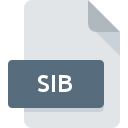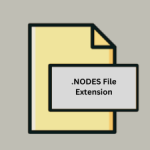.SIB File Extension

Sibelius Score
| Developer | Avid |
| Popularity | |
| Category | Audio Files |
| Format | .SIB |
| Cross Platform | Update Soon |
What is an SIB file?
Files with the .SIB extension have become a mysterious presence in the digital realm, often leaving users curious about their origin and purpose. In this comprehensive guide, we will delve into the world of SIB files, exploring their history, structure, technical specifications, advantages, disadvantages, and providing practical insights on how to convert and open them across various operating systems.
More Information.
The history of SIB files dates back to the early days of graphical user interfaces (GUIs) when icons became integral for user interaction. Initially employed in Windows operating systems, these files were intended to serve as containers for icons, streamlining the visual elements of software interfaces.
Origin Of This File.
The origins of the SIB file extension can be traced back to the realm of software development and graphic design. Typically associated with image-related projects, SIB files store icon images and other graphical elements. While not as widespread as some other file formats, their utility in specific applications makes them noteworthy.
File Structure Technical Specification.
SIB files follow a structured format, housing icon images in a manner that allows for efficient retrieval and display. The technical specifications involve encoding methods, pixel dimensions, color depth, and other parameters that define the visual characteristics of the icons within the file.
How to Convert the File?
1. Windows:
Converting SIB files in a Windows environment is a streamlined process. Follow these steps:
- Native Tools: Windows often provides built-in tools for basic file conversion. Right-click on the SIB file, select “Open with,” and choose an application compatible with the desired output format. This may vary based on the specific use case.
- Third-Party Software: Utilize third-party applications designed for graphic design and image conversion. Tools like IrfanView or XnView offer user-friendly interfaces and support a variety of file formats, allowing you to convert SIB files effortlessly.
2. Linux:
Linux users can convert SIB files using graphic design software or specialized utilities. Here’s how:
- GIMP (GNU Image Manipulation Program): Open the SIB file in GIMP, a powerful open-source graphic design tool. Once open, choose the export option and select the desired format (e.g., PNG, JPEG) to convert the file.
- ImageMagick: For command-line enthusiasts, ImageMagick provides a robust solution. Use the ‘convert’ command, specifying the input and output formats, to convert SIB files efficiently.
3. Mac:
Mac users can leverage graphic design software available on macOS or third-party applications for SIB file conversion:
- Preview: Use the built-in Preview app on macOS. Open the SIB file, go to the “File” menu, and choose “Export.” Select the preferred format (e.g., JPEG, PNG) for the conversion.
- Adobe Photoshop: If available, Adobe Photoshop for Mac offers a professional-grade solution. Open the SIB file, choose “Save As,” and select the desired format.
4. Android:
On Android devices, converting SIB files can be accomplished through file manager apps or dedicated graphic design tools:
- File Manager Apps: Install a file manager app from the Google Play Store, navigate to the SIB file, and choose the “Share” or “Open with” option. Select a graphic design app that supports SIB files, and then export or save the file in a different format.
- Graphic Design Apps: Utilize graphic design apps available on Android, such as Adobe Photoshop Express or Pixlr. Open the SIB file within the app, and use the export or save feature to convert it to a different format.
5. iOS:
iOS users can convert SIB files using graphic design apps from the App Store. Here’s how:
- Graphic Design Apps: Download a graphic design app like Adobe Illustrator or Affinity Designer from the App Store. Open the SIB file within the app, and use the export or save functionality to convert it to a format compatible with iOS.
Advantages And Disadvantages.
One notable advantage of SIB files lies in their compactness and ability to maintain image quality, crucial for preserving the integrity of graphical elements in software. However, their limited compatibility and specialized use may be considered a disadvantage, as not all applications or platforms readily support them.
How to Open SIB?
Open In Windows
In Windows environments, opening SIB files is a straightforward process. Users can leverage native tools or third-party applications designed to handle these files. Windows Explorer often provides a preview of SIB files, allowing users to visualize their contents effortlessly.
Open In Linux
Linux users can access SIB files using compatible graphic design software or by utilizing specialized utilities that support the format. The Linux ecosystem offers flexibility, enabling users to choose from multiple applications based on their preferences and requirements.
Open In MAC
Mac users can explore SIB files with graphic design software available on the macOS platform. Additionally, third-party applications may provide seamless compatibility, ensuring that Mac users can integrate SIB files into their projects effortlessly.
Open In Android
Android, being a versatile mobile operating system, supports various file formats, including SIB. Users can leverage file manager apps or dedicated graphic design tools available on the Google Play Store to view and manipulate SIB files directly on their Android devices.
Open In IOS
iOS users can manage SIB files using graphic design apps available on the App Store. These applications empower users to open, edit, and incorporate SIB files into their projects, extending the compatibility of this file format to the iOS ecosystem.
Open in Others
For other operating systems, compatibility with SIB files may vary. Users can explore cross-platform graphic design tools or file conversion utilities that facilitate the seamless handling of SIB files across diverse environments.













